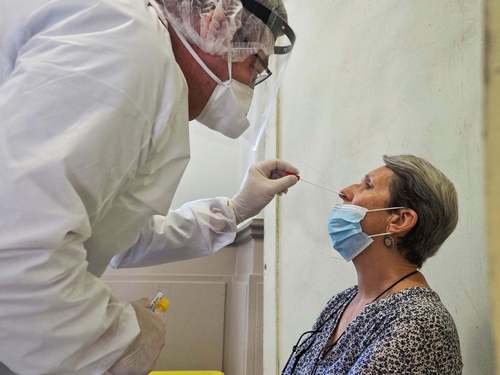But what about Adesh’s 79-year-old grandmother, Adiya Patel? She had a hip replacement five years ago and is getting similar pains in the other hip. If you didn’t know her well, you’d think she needed another operation, but her longstanding GP, Dr Choudhury, knows that she wants to avoid surgery after a reaction to an anaesthetic last time.
Before the pandemic, billboards in London advertised a doctor-in-your-pocket service. Targeted at busy commuters, it consisted of a smartphone app and a promise of a video link-up to a real doctor within 45 minutes. What’s not to like?
Plenty. The pop-up video doc may be fine, on this occasion, for busy accountant Adesh Patel, who wants an antibiotic in the post for his septic finger. Indeed, patients like him may not even need a video call, they can explain their symptoms to a doctor by phone. The video link was, arguably, a commercial gimmick to lure the worried well.
He’s been helping her lose weight so that the operation won’t be needed. Adiya is miserable after her husband died last year and has a touch of heart failure, which sometimes makes her breathless. All this is controlled by regular chats and various tablets that Dr Choudhury (who speaks her native language) has tweaked over the years. She’s very fond of him.
In his face-to-face surgery today, Dr Choudhury will see: Lydia Poliakov, a 53-year-old shop assistant who has found a lump on her breast; six-month-old Archie Merton who’s got a high fever and is not eating; and Jim Brown, an unemployed man who has no family, no home, no mobile phone and no money. Jim needs regular foot and eye checks for his diabetes and a weekly prescription for methadone since he came off heroin.

These fictitious cases illustrate the findings of a recent study my team did into why some remote consultations by video are efficient, effective and well-received but others are logistically cumbersome, technically inadequate and associated with deficiencies in care, such as missed diagnoses or a poor patient experience.
While it’s impossible to generalise, remote consultations seem to be less suitable for people who:
- Are very young or very old
- Are very unwell with a high-risk condition, such as pneumonia
- Have complex health or wider needs
- Want or need a physical examination
- Have difficulty communicating (though the hard-of-hearing may prefer a video link where neither party wears a mask)
- Need supervised check-ups, for example, for controlled drugs
- Do not own, or wish to use, technologies like smartphones
- Lack privacy at home.
‘Remote by default’
When former health minister Matt Hancock announced a year ago that all medical consultations would henceforth be “remote by default”, he had in mind patients like young Mr Patel with one-off, easily sorted problems. Setting up remote services to meet that kind of need is almost as easy as putting up a lemonade stall.
A face-to-face service will always be needed for patients like the unwell baby with a high fever and the homeless person with multiple care needs and no technology
Providing remote services for a wider range of patients with more complex needs (physical, mental and social) is vastly more challenging. But that doesn’t mean it’s impossible. Healthcare providers need to invest in the right equipment, streamline access (for example, by allowing receptionists to channel each web request to the most appropriate doctor), train staff and patients in how to get the most out of a remote consultation (whether telephone, video or web-consult), and provide information on what is and isn’t suitable for each consultation type. With this kind of groundwork, some complex consultations can be undertaken safely remotely.
It turns out that old Mrs Patel, who was finding the walk to the surgery increasingly difficult on her painful hip, finds remote consultations with Dr Choudhury quite acceptable as long as one of her relatives is available to help her connect to the iPad, she can be sure to get her own GP, and everyone keeps out of the living room while she’s talking to the doctor.
Ms Poliakov, too, is a candidate for a remote consultation. She knows she has a breast lump, and at her age, there’s no doubt it needs to be seen urgently. A telephone or e-consultation with her GP will get her a prompt referral to the breast clinic. What Mrs Poliakov needs is accurate information when she searches her symptom, encouragement not to ignore that lump, and a fast-track for her request for a call-back.
But a face-to-face service will always be needed for patients like the unwell baby with a high fever and the homeless person with multiple care needs and no technology.
Our research has shown that GP consultations should not be remote by default, but that with attention to infrastructure, training and planning, remote consultations could become a realistic option for a much wider range of people than the healthy young professionals towards whom they were originally targeted.



